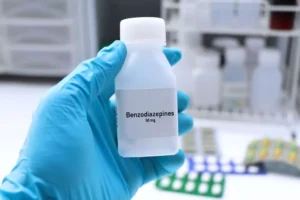
If you take an extended-release amphetamine, wait at least eight hours before drinking alcohol. Stimulants increase the activity of your central nervous system or the part of your brain that sends messages to nerves to tell them how to complete their jobs. Once you’ve been addicted to a drug, you’re at high risk of falling back into a pattern of addiction.
Why it is important to do this review

Many substances or behaviors that can cause addiction make a person feel good for a short time. A person may seek to repeat the good feeling and come to rely on the substance or activity. According to the DSM-5 criteria, a diagnosis of Substance Use Disorder (SUD) requires meeting at least two of the specified criteria within https://ecosoberhouse.com/ a 12-month period. However, it’s important to note that for prescription medications taken as directed by a doctor, developing tolerance or dependence does not necessarily indicate an SUD and would not be counted among the two required criteria. Amphetamines are controlled substances in the USA with the C-II designation.
Amphetamine Addiction Signs, Symptoms, Effects, and Treatment
Summary results for the meta-analyses are shown in Table 2 and forest plots for any use of amphetamines and amphetamine use disorders can be found in Fig. 3 respectively (the forest plots for anxiety are not presented due to the small number of studies). Meta-analysis results were generally consistent with findings from the narrative reviews of studies not included in amphetamine addiction the meta-analyses (see Supplement G). There was significant heterogeneity in all effects, which reflects the variation in outcome measures, study methods and settings. There were 31 comparisons for any use of amphetamines and 30 for amphetamine use disorders. There were fewer adjusted comparisons (17 for any use of amphetamines and 9 for amphetamine use disorders).

Amphetamine Withdrawal Symptoms
- Amphetamines, i.e. racemic amphetamine, d-amphetamine and methamphetamine, were widely used to promote wakefulness in World War II, which in turn led to a large increase in production that resulted in large surpluses of these drugs after the war.
- However, not all premorbid risk factors for psychosis have been controlled for in these studies (e.g., familial risk [83], trauma [84], perinatal factors, immigration and urbanicity [85]) and future studies should control for these factors.
- Amphetamines contain a methyl group to the alpha position on its carbon chain resulting in lipophilicity, increasing its volume of distribution, and CNS stimulation.
- The studies reviewed here report on a variety of outcomes defined, measured and analysed differently across most publications.
- Although the most severe symptoms occurring during amphetamine withdrawal resolve in a week or less, some symptoms may continue for weeks or months (Watson 1972; Hofmann 1983).
One study (Kongsakon 2005) administered a dose range of 15‐60 mg per day of mirtazapine with an initial dose of 15 mg. Dose titrations during this study were based on the subjects’ clinical response to the medication. No medication other than mirtazapine was used according to the study report.
Amphetamine Addiction Treatment
- In total, 55 primary outcome measures were used (inclusive of variations) 93 times (as some studies had multiple primary outcomes).
- Furthermore, the time of lisdexamfetamine’s peak pharmacological effect was substantially delayed compared with IR d-amphetamine, at 3.0 h versus 1.5–2.0 h.
- Test of heterogeneity is important to check whether the results of studies are similar within each comparison.
- ADHD is characterised by inattention, distractibility, working memory deficits and impulsivity, and as such, subjects with this disorder are particularly unsuited to compliance with rigid dosing schedules.
Provision of client-centred care requires future work to address the need to better understand concepts of treatment matching or stepped care. Irrespective of the promise of pharmacotherapy, effective treatment of substance use disorders requires comprehensive biopsychosocial intervention. One study (2%) examined sertraline (50 mg po BD), along with CM for the treatment of MA dependence over 14 weeks [61]. The four study arms were sertraline only, sertraline and CM, placebo only, placebo and CM. There was no statistically significant main or interaction effect of either sertraline or CM for measures of MA use. In fact, those in the sertraline-only arm were significantly less likely to achieve 3-week abstinence and significantly more likely to have an MA-positive UDS throughout the study compared with other study arms.
Tachycardia, hyperthermia, volume depletion, agitation, seizures, and rhabdomyolysis are sentinel findings. Diagnosis is facilitated by a high index of suspicion and urine amphetamine screening. Cooling treatments, such as wetting and blowing air over the person’s skin or using special cooling blankets, may be needed for hyperthermia. Once you decide you want to do something about your drug use, the next step is to get help and support. Sign up for free and stay up to date on research advancements, health tips, current health topics, and expertise on managing health.

Outcome measures were any reported impact of treatment related to AMPH/MA use. The participants of the four included studies were mainly males (110 males, 15 females). In two studies (Jittiwutikan 1997, Srisurapanont 1999b), participants were inpatients at a drug dependence treatment center who met DSM‐IV criteria for amphetamine withdrawal.
Short-Term Effects of Amphetamines
Studies eligible for the meta-analysis were reviewed for availability of data and authors were contacted to obtain missing data. The principle summary measure used was an odds ratio, as there were few studies with mean differences. In studies that did not report odds ratios, we extracted data in a 2 × 2 mental health outcome by exposure–contingency table to calculate the unadjusted odds ratios.

Risk of Bias Within and Across Studies
Treatment programs use behavior change techniques through counseling (talk therapy). The goal is to help you understand your behaviors and why you use amphetamines. Involving family and friends during counseling can help support you and keep you from going back to using (relapsing). You usually do not get addicted to prescription amphetamines when you take them at the right dosage to treat your health condition.